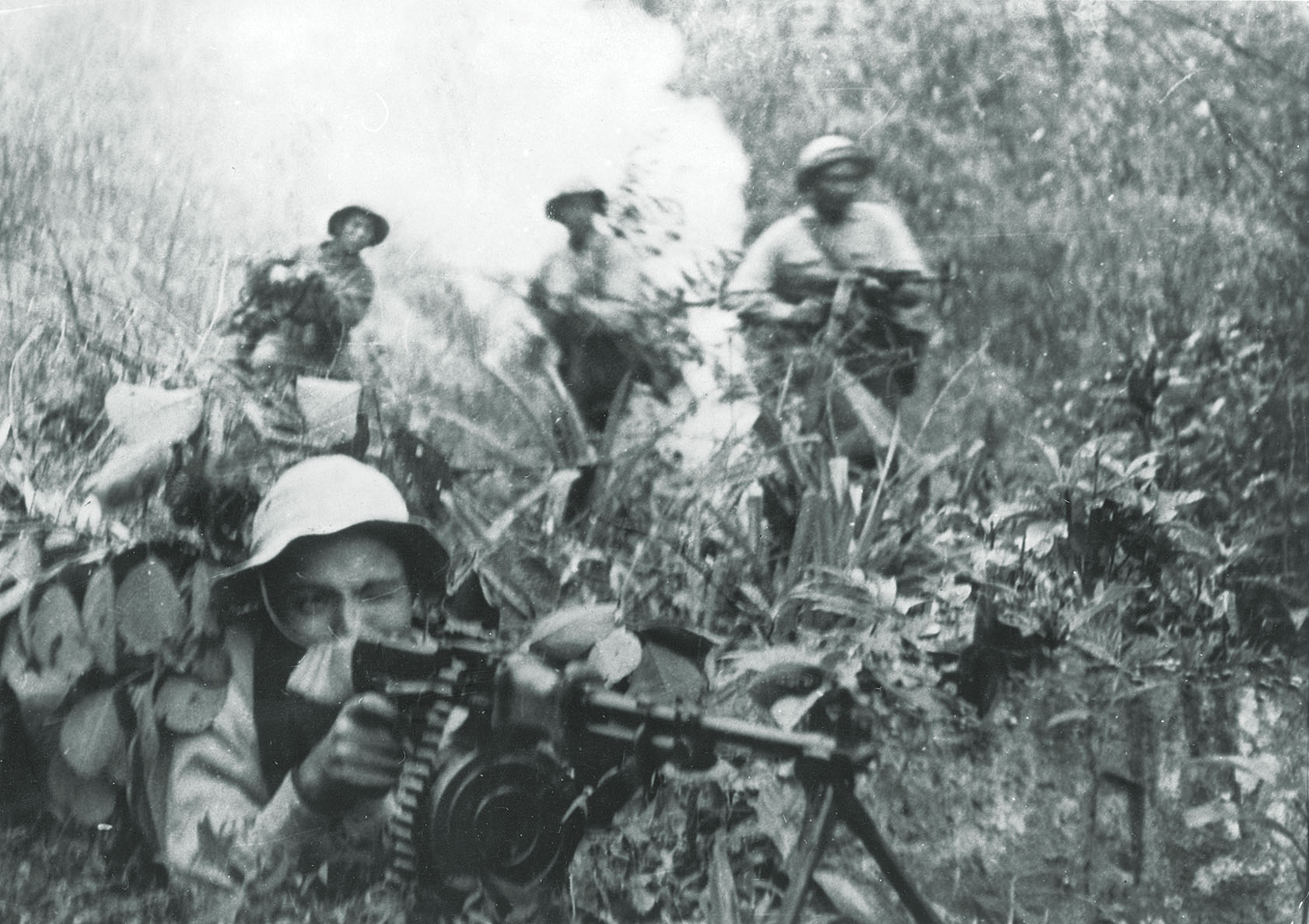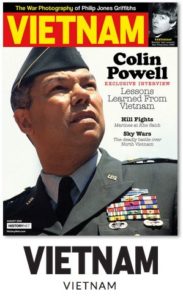Viet Cong sympathizers behind the scenes were key to the communist strategy in South Vietnam
“Propagandize the masses to build the Revolutionary Infrastructure, arm the revolutionary masses to build a People’s Army.” That was the communists’ motto throughout their wars with the French and Americans in Vietnam. While the People’s Army was one in which everyone from a child to an adult could be recruited to serve, its most prominent section, commonly called the North Vietnamese Army during the U.S. war, provided the visible firepower that drove out the French in 1954 and forced Saigon to surrender in 1975. However, unseen subversives operating in the shadows permeated the Southern government and weakened it from the inside, easing the way for the North’s military forces.
That shadow government was called the Revolutionary Infrastructure by the communists and l’infrastructure Clandestine Viêt Minh by the French secret service. It is better known by the American term, the Viet Cong Infrastructure. When Saigon fell and the communists took total control of the country, the Viet Cong Infrastructure was no longer needed. However, adherents of the concept are operating in other places today, notably Afghanistan. After the Soviets invaded in 1979, local Islamic fighters, the Mujahedeen, developed a similar infrastructure, as did the Taliban movement that still operates against a U.S.-led coalition deployed there after the Sept. 11, 2001, attacks to destroy al-Qaida terrorists hiding in the country.
The Viet Cong Infrastructure largely comprised three elements: Communist Party “cells” (small teams of revolutionaries), linked by “couriers” using corridor routes, and “guards,” sympathizers among the masses or specific units that protected the courier routes. The communists had cells at the hamlet, district, provincial and national level—from the post office to the presidential palace.
Communist leader Ho Chi Minh said the couriers and courier corridors were “the most important element for victory, because they serve the revolution in much the same way as blood vessels and a nervous system serve the human body.”
At the local level, the shadow government was a covert organization of communist party members and revolutionary sympathizers who set up a government structure paralleling the administrative functions of the noncommunist government that was the official authority in the area. The communists gained control of villages through popular social services programs or force. The shadow government’s functions included administering the war effort and controlling the local population. It also provided services related to land control, agriculture, schools, “reeducation” (a euphemism for communist indoctrination), medical facilities, a legal system and management of the local economy. The shadow government even had its own system of taxation.
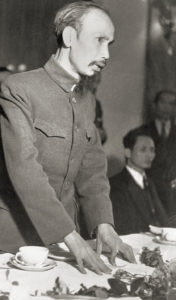
in the 1920s.
The infrastructure system was born in the early days of Ho’s efforts to free Vietnam from the French rulers who had occupied parts of the country since the mid-19th century. In June 1911, Ho sailed for Marseilles, France, and in following years traveled to many other countries, including the United States. Reading the French newspaper L’Humanité in 1920, Ho saw Vladimir Ilyich Lenin’s Thesis on the National and Colonial Questions and claimed it converted him from a socialist thinker to a Leninist revolutionary. Ho later went to China, where he trained his first couriers in 1925. Known as giao thong, “communications agents,” they needed not only the traditional courier skills for transporting documents and guiding people but also the abilities of fighters, spies and propagandists.
Ho’s first official courier was Ly Phuong Duc, trained in Guangzhou, China, in 1925. “I remember how he began our first session by opening a map of Guangzhou and asking us to pinpoint where we now lived and worked,” she said. “Once we had done this, [Ho] then went on to explain how to reach these locations via alternative routes, so that the enemy could not detect a pattern in our movements. He then asked us to find other key locations, such as newsstands, parks and theatres. This gave us a variety of meeting points to completely confuse the enemy.”
In the late 1930s, two courier sections emerged. One consisted of “legal” and “semi-legal” couriers who conducted subversive actions while engaging in legitimate activities using identification permits, such as those issued by Saigon authorities during the Vietnam War. Others were “illegal” couriers operating almost entirely out of sight and performing duties that involved limited interactions with officials on the other side.
A good example of a legal courier is Nguyen Van Lem, who had a permit to trade car tires in Saigon. With that cover, Lem used tire shipments to smuggle weapons and explosives for the revolutionaries. During the communists’ Tet Offensive attacks in 1968, Lem was caught and shot at point-blank range by South Vietnamese Maj. Gen. Nguyen Ngoc Loan. His execution was captured by Associated Press photographer Eddie Adams and became an iconic image of the war.
Another legal courier was Le Thi Thu Nguyet, who later became an elite fighter as well. “I conveyed secret letters written in invisible ink and coded,” she said. “On many occasions the text was just a concealed line in a newspaper or on a small piece of paper hidden in my shoe or hair.”
In 1963, Nguyet’s superiors asked her to arrange for a bomb to be planted on a military Boeing 707. They told her to start a relationship with someone who worked at Tan Son Nhut Airport in Saigon. She picked a South Vietnamese officer who worked in logistics.
“The flight to be targeted had been chosen from information gathered by our network inside the base,” Nguyet said. “They had heard that a group of American officers were to leave Vietnam. My boyfriend then found out what type of suitcases they had purchased, and we went and bought the same type from the market. We knew from experience that when the Americans boarded the flight they handed their cases to the Vietnamese staff to load them on to the plane. It was at this point, when my boyfriend loaded the cases, he simply switched one of them for our case with the bomb inside.” The bomb did not go off midflight as planned. It’s thought that atmospheric pressure stopped the timer, which restarted when the plane landed in Honolulu. By the time the bomb exploded, the Americans had left the plane.
Semi-legal couriers worked in legitimate (legal) jobs, but some noncommunist associates knew they were revolutionaries and used them as go-betweens to deliver messages to communist leaders—and in turn the communists used them as liaisons with the South Vietnamese and Americans.
For example, in early 1968, the communists sent semi-legal couriers to the U.S. Embassy in Saigon to indicate Hanoi’s receptiveness to the idea of peace talks after receiving messages sent by Americans implying an interest in leaving Vietnam. However, Hanoi’s overtures were a ruse to distract the Americans from the Tet Offensive the communists were planning. Semi-legal operatives were vital just before the capture of Saigon, when they probed to determine the likelihood of U.S. reintervention.
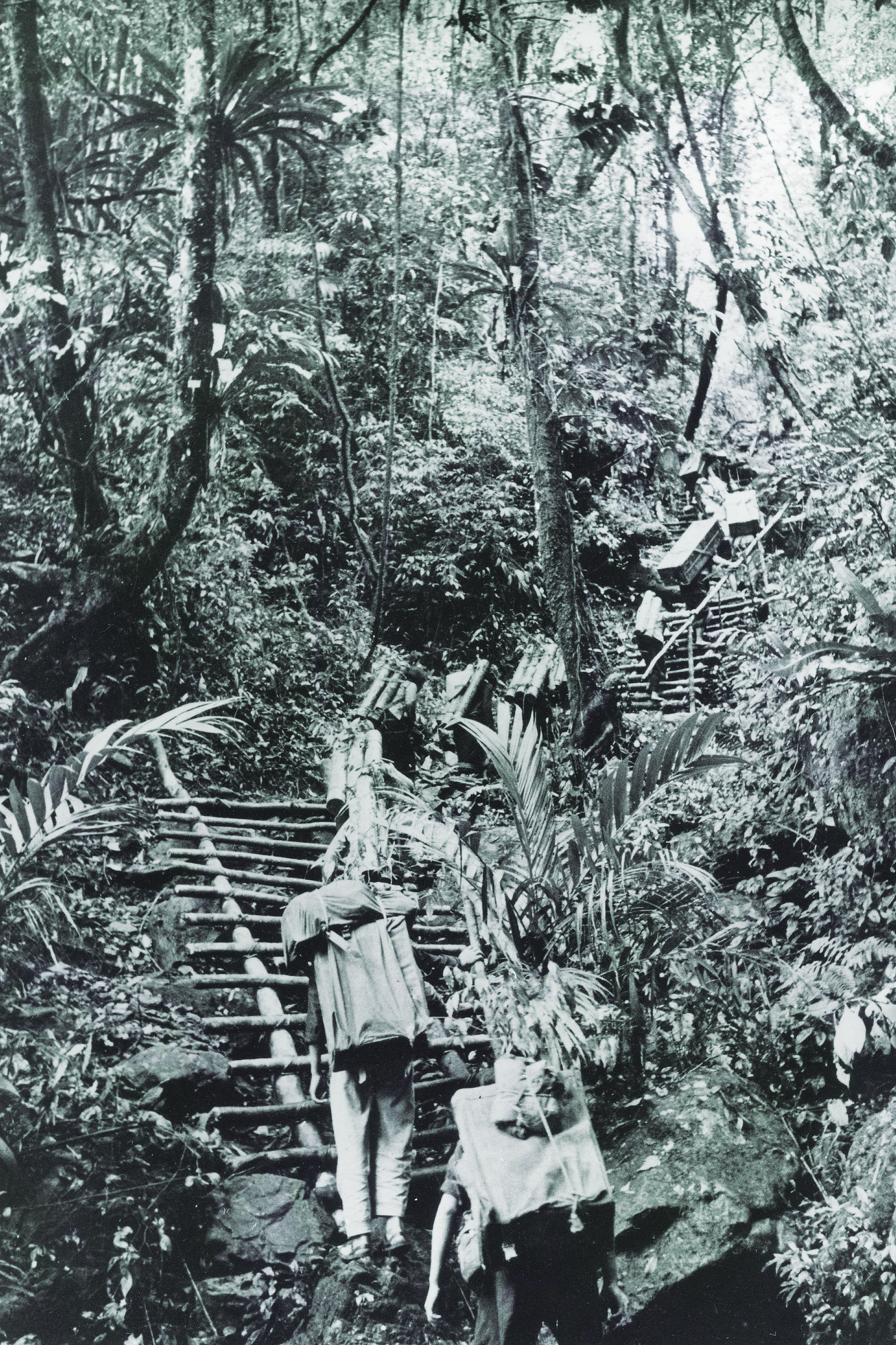
Couriers serving in the illegal sphere generally did their work at night to reduce contact with their opponents. Typically, they were people who previously worked legally or semi-legally but had been uncovered by the other side. They couldn’t be moved to another region to protect themselves because their value lay in their knowledge of the local terrain. Nor could they be issued new fake identification papers once the Americans created computer files on communist suspects, making it harder to work with false papers.
The exact number of communist couriers during the Indochina wars is unknown. Most revolutionaries had experience as couriers. A large number were unpaid peasant women.
In late 1940, the Communist Party created “corridors” of courier lines. In a corridor, several courier lines ran in parallel but were isolated from each other, which enabled a courier to go out on one line and return on another, complicating the efforts of noncommunist forces trying to predict which route couriers would use. Along the route were “safe houses” for sharing intelligence and receiving instructions.
Explaining how the system worked, Phan Nam, one of Hanoi’s top infrastructure operatives in Hue, gave the example of his trip to the house of a fellow communist, “Mrs. An.” To enter her house safely, he said, “I knew from experience that at 6:30 p.m. the BBC broadcast their Radio World Service [news]. For security reasons I had to arrive right on time at my destination. I could not hang around outside the house. I calculated that it took me 10 minutes to cycle to Mrs. An’s house from where I was coming. On arrival I rode past the house once. If she was listening to the BBC news, it meant I could enter. If I heard no news it meant that something had happened, and I had to go to the next safe house and so on until there was a secure place for me—like an aircraft trying to land in a bad storm! Each place had a different system. I used a coded message to enter a house.” He added: “Conveniently, the BBC aired this just about rush hour, so I went around unnoticed as one of the crowd.”
The guard component, the third element of the Viet Cong Infrastructure, evolved from Ho’s partnership with Vo Nguyen Giap, a young communist he first met in 1940 while both were in China to accelerate the Vietnamese independence movement. When Japan occupied Vietnam with French acquiescence during World War II, Ho instructed Giap in the early 1940s to build a courier network from Cao Bang province, bordering China, toward the Red River Delta, where Hanoi sits. Giap established various units to protect his network.
Trainees for guard positions fell into three categories. In the first were those who did not want to serve far from home. They returned to protect their villages and find others to join the cause. In the next category, trained revolutionaries skilled in guerrilla warfare were allocated to “self-defense teams” or “honorary fighting teams.” The self-defense teams defended the corridors. The honorary fighting teams killed or used other methods to stop spies and informers who got too close to the corridors. The third category, the very best trainees, formed paramilitary groups called “advancing propaganda teams,” who traveled across Vietnam to spread the message of nationalism. They also opened courier routes and guided revolutionaries along existing lines.
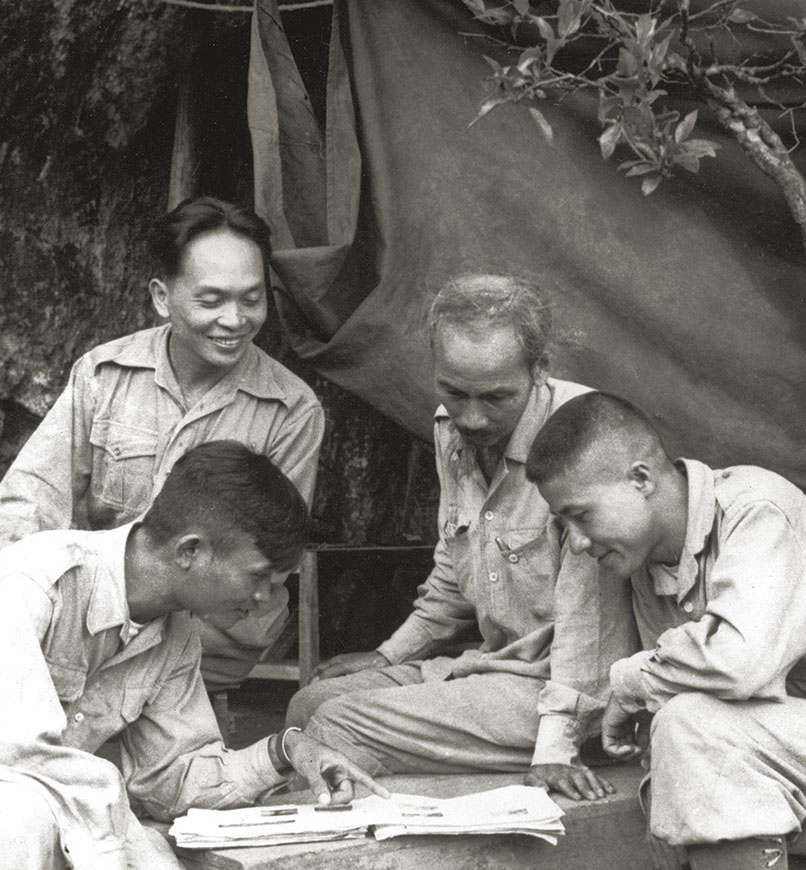
This infrastructure spread from hamlet to hamlet like an oil spill on a map, helping Ho come to power during the August Revolution of 1945 following Japan’s surrender, announced on Aug. 15. He declared independence on Sept. 2. The guard system Giap designed to protect the courier network became the building blocks for the People’s Army that went to war against the French. Ho made Giap his top general and commander of the new regular army.
Despite its importance, little is recorded about the Viet Cong Infrastructure. Le Trong Nghia, who oversaw communist Vietnam’s intelligence service from the early 1950s to 1968, attributes the dearth of records to the organization’s decentralized nature: “Because many of the people involved were recruited and run locally by individual heads, when that head died, their network went unrecorded. Therefore, no one person will ever thoroughly grasp this paramilitary system, not even me!”
In 1945, Ho asked Giap to complete corridors that were started in the early 1940s and became part of the Trans-Indochina Link, which eventually ran through Laos, Thailand and Cambodia. Giap used those corridors when his army and supplies advanced on Cochinchina (the name for the southernmost region of Vietnam during French rule). Part of that route formed the Ho Chi Minh Trail during America’s war. A similar development occurred with the Trans West Supply Line, a land-sea route through Cochinchina, Cambodia and Thailand during the French war. The ports and wharfs of that route became part of the Ho Chi Minh Trail Sea Route.
Hoping to block Giap’s push into Laos, which included military and infrastructure campaigns, the French put a base in his way at Dien Bien Phu. That didn’t stop Giap. The French, badly beaten in May 1954, surrendered and signed a treaty that ended their rule in Indochina.
In March 1965, the first U.S. ground combat units arrived and remained until March 1973.
The 1968 Tet Offensive is generally considered the turning point of the Vietnam War. Attacks across the country on Jan. 30-31 received heavy media coverage, especially in Saigon, where Viet Cong breached the U.S. Embassy compound, and Hue, where U.S. Marines were pinned down. Little remembered is a communist attack just a few months later on the night of Aug. 22-23 at Forward Operating Base 4/ Command and Control North, a top-secret outpost near Da Nang. That night 17 U.S. Special Forces soldiers were killed in the heaviest one-day loss for the Green Berets during the war and by some accounts the deadliest in Special Forces history. On the other side, more than 30 enemy troops were killed.
The high Special Forces death toll resulted from “embarrassing breaches of security,” according to John “Tilt” Stryker Meyer, a Special Forces team leader in Vietnam who has studied the battle. “During a lengthy guerrilla war, even the best of troops and their commanders can become lax, an error the NVA dramatically exploited.”
Before the attack, members of the Viet Cong Infrastructure, embedded within the base, gathered intelligence on troop numbers, arms and camp security. American veterans of the battle said the communists knew the camp layout well and had placed machine guns to create clean lines of fire down key pathways. It was obvious that infrastructure members had conducted a propaganda operation inside the camp because some Vietnamese security men openly cooperated with the communists while others turned a blind eye to invaders crawling through the barbed wire.
The scope of the Tet attacks shocked the American public and gave the communists a propaganda victory, but militarily they lost heavily, and vast parts of the Viet Cong Infrastructure were destroyed. Additional blows to the infrastructure came from the joint U.S.-South Vietnamese Phoenix Program, implemented in July 1968 to collect intelligence on individuals working within the communist network. Those Viet Cong members were to be killed, captured, arrested, induced to desert or compromised.
The Phoenix Program was one of the most controversial operations of the Vietnam War. Much of the American public saw it as an unnecessary illegal assassination program that mostly targeted civilians, whereas U.S. officials deemed it a legal program that was successful in neutralizing an enemy infrastructure.
Although the infrastructure suffered serious damage in Tet gun battles, it sustained the heaviest losses as a direct consequence of American counterespionage strategies, former Viet Cong members acknowledge.
Mrs. Phuong (declined to give full name), a South Vietnamese army lieutenant assigned to the Phoenix Program, looked at various “indicators” to ascertain if someone was the enemy. “An indicator can be pretty much anything,” she said, “such as if a man is home every night apart from Wednesdays. Why? This is an indicator. He might have been seeing his girlfriend or that might be the night that the Communist Party meets. Who did he go to school with? Are any of them now out in the forest? Does he have scratches on his legs, and if so, where are they from? If you think that the scratches are from the forest, only VC go there. Sometimes we just asked them if they liked the government, or we said that we didn’t like the government, and we observed how they reacted.”
That process could take months. Someone tagged with a lot of indicators would likely be designated as part of the Viet Cong Infrastructure.
While Tet and Phoenix eliminated many senior communists, there was always a willing person to fill a vacant position. But after 1968 the underground wasn’t able to operate as effectively as it had. The infrastructure’s knowledge base had eroded. Replacements lacked the experience needed for the posts they held. They were uneducated in revolutionary methods and in some cases disruptive. Those unpredictable replacements damaged the revolutionaries, and their irrational behavior also created more danger for U.S. personnel trying to destroy them.
In January 1969, Samuel A. Adams, a CIA analyst, drafted a top-secret report titled Intelligence Failures in Vietnam: Suggestions for Reform. He noted that a “basic failure has been—until very recently—the relative neglect by US intelligence of the wellsprings of the enemy’s power, the Communist Party and its related bureaucracies, collectively called the ‘infrastructure.’ … In misunderstanding where the enemy’s main strength lay, the US devoted a disproportionate share of its resources to attacking the enemy’s army … The Allies’ best conceived and most ambitious scheme to attack the infrastructure, the Phoenix Program, did not begin to get off the ground until some time last year.”
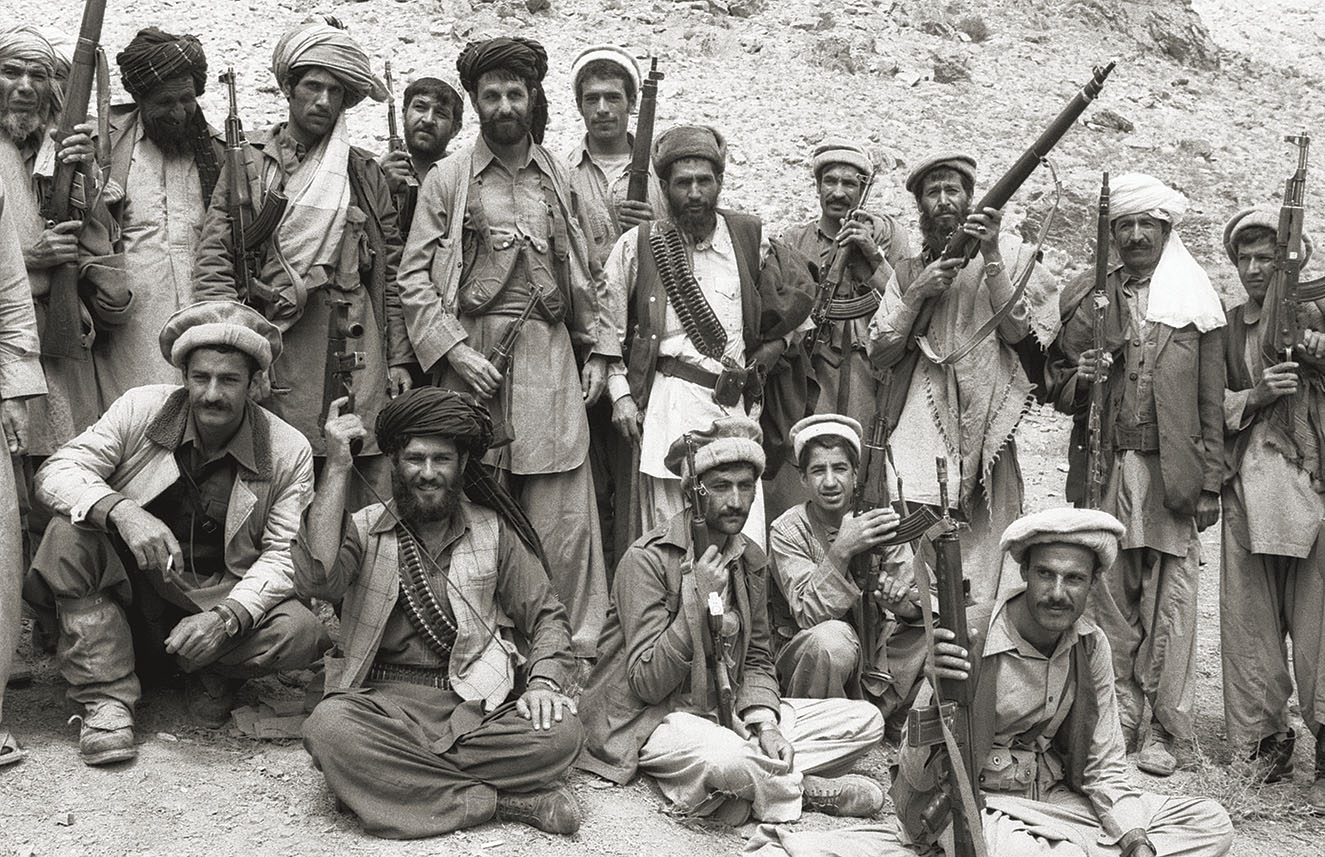
By spring 1975, the infrastructure was depleted in strength but had not been neutralized. When the last president of South Vietnam, Duong Van Minh, surrendered on April 30 after just two days in office, he knew he had no choice. The infrastructure ran straight through his cabinet and formed an operational web across vast areas of Vietnam. Minh himself had been proselytized from the early 1960s by the communists and was now pro-revolution.
When Saigon fell, the rest of the world saw the war’s symbolic end—North Vietnamese tanks crashing through the gates of the Presidential Palace as conventional communist troops annihilated the conventional troops of South Vietnam. But something else equally significant happened. The underground infrastructure surfaced, bringing masses of people with it. Clandestine revolutionaries revealed themselves and took over the southern regime’s military and administrative apparatus. The shadow government was no longer needed and unofficially disbanded.
Similar insurgent infrastructures have appeared elsewhere in the world, including Afghanistan in the 1980s. An Afghan sympathetic to the Mujahedeen’s fight against the Soviet invasion noted that local forces had used Mao Zedong’s, Ho’s and Giap’s revolutionary strategies, integrating them into their own fighting approach and ancient tribal systems.
During the 1980s, Soviet draftees beset by CIA-supplied Afghan rebels called the insurgents “ghosts” because they could never quite grasp and hold their enemy, similar to the Viet Cong’s shadow government. The CIA and Mujahedeen repulsed the Soviet invaders in 1989.
After al-Qaida’s attacks on Sept. 11, 2001, the U.S. and its allies invaded Afghanistan to destroy the Taliban, an insurgency with an effective shadow government that ruled most of the country and was believed to have harbored al-Qaida. In its fight against the Taliban, the U.S. adopted key features of its Vietnam-era Phoenix program, renamed “kill/capture.”
The kill/capture program generally targeted mid- and high-ranking officials. However, Taliban operatives were entrenched after generations within Afghan society and hard to detect, much like the Viet Cong. The ones eliminated were often replaced by uncontrollable and untested radicals.
Debates waged by U.S. officials trying to combat the Viet Cong’s shadow government continue today as leaders across the globe confront terrorist shadow networks. Some researchers believe a Phoenix or kill/capture approach would be useful as part of a wider strategy. Others contend that addressing grievances in society will decrease the appeal of terrorist groups.
Marc Sageman, a former CIA operations officer who worked with the Mujahedeen and advised the U.S. government on terrorism issues, suggests approaches that establish strong homeland security and take the glory out of terrorism by, for example, demilitarizing the conflict and treating the terrorists as common criminals.
The Revolutionary Infrastructure in Vietnam was developed solely for one country, and that war is long over. Nonetheless, it is important to research Ho’s network while people who designed and used it are still alive. If we don’t, it will always be an enigma and a missed opportunity to better understand how to destroy shadow government systems that threaten us today. V
Virginia Morris is an author with a doctorate in engineering. Over many years, she has written books and articles on the wars in Vietnam, focusing on interviews with veterans and visits to the region. This article is adapted from her second book, Ho Chi Minh’s Blueprint for Revolution, In the words of Vietnamese Strategists and Operatives.
This article appeared in the June 2021 issue of Vietnam magazine. For more stories from Vietnam magazine, subscribe here and visit us on Facebook:

